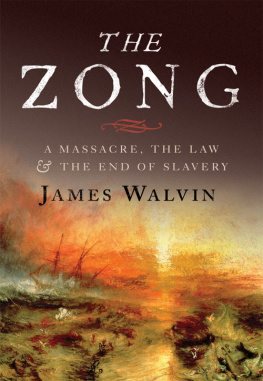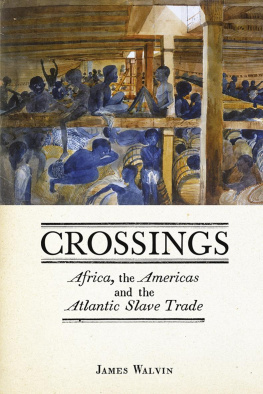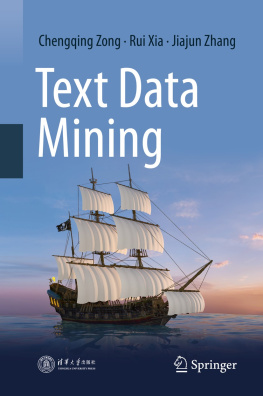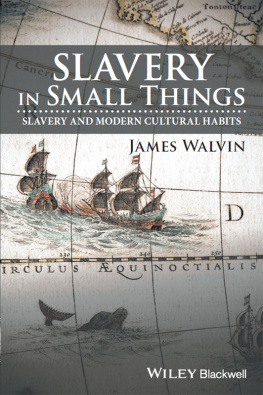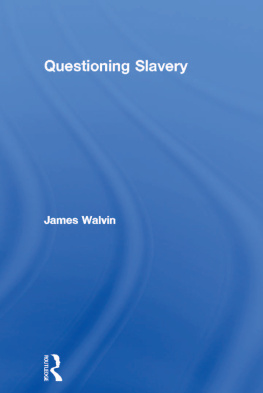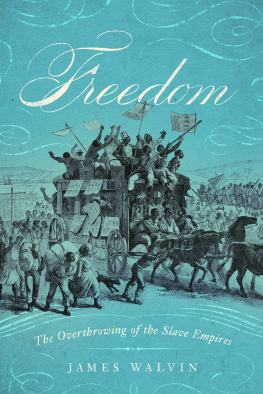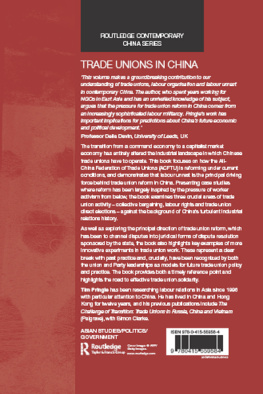


Copyright 2011 James Walvin
All rights reserved. This book may not be reproduced in whole or in part, in any form (beyond that copying permitted by Sections 107 and 108 of the U.S. Copyright Law and except by reviewers for the public press) without written permission from the publishers.
For information about this and other Yale University Press publications, please contact:
U.S. Office
Europe Office:
Set in Adobe Caslon by IDSUK (DataConnection) Ltd
Printed in Great Britain by TJ International Ltd, Padstow, Cornwall
Library of Congress Cataloging-in-Publication Data
Walvin, James.
The Zong : a massacre, the law and the end of slavery / James Walvin.
p. cm.
Includes bibliographical references and index.
1. Zong (Slave ship) 2. Slave-tradeEnglandLiverpoolHistory18th century. 3. Slave-tradeJamaicaHistory18th century. 4. SlavesViolence againstHistory18th century. 5. Mass murderHistory18th century. 6. Seafaring lifeHistory18th century. 7. TrialsEnglandLondonHistory18th century. 8. Marine insuranceGreat BritainHistory. 9. SlaveryLaw and legislationGreat BritainHistory. 10. Antislavery movementsGreat BritainHistory. I. Title.
HT1164.L5W35 2011
306.3'62094275309033dc22
2011001489
A catalogue record for this book is available from the British Library.
10 9 8 7 6 5 4 3 2 1
For Michael Craton
Contents

List of Illustrations

Liverpool from the Mersey, No. IV, engraved by Robert Wallis after a picture by Samuel Austin, published in Lancashire Illustrated, 1831.
Frieze depicting African heads on the Town Hall, Liverpool.
A Liverpool Slave Ship by William Jackson, c. 1780. Courtesy of National Museums Liverpool.
for the Humanities and the University of Virginia Library (2-605).
, sponsored by the Virginia Foundation for the Humanities and the University of Virginia Library (2-589a).
Leg shackles, drawing by Jean Boudriot, Traite et Navire Negrier l'Aurore, 1784 (Paris, 1984).
Position of slaves in the hold, drawing by Jean Boudriot, Traite et Navire Negrier l'Aurore, 1784 (Paris, 1984).
Representation of an Insurrection onboard a Slave-Ship, fold-out drawing in Carl B. Wadstrom's An Essay on Colonization, particularly applied to the Western coast of Africa, 179495. Courtesy of the Library Company of Philadelphia.
Slaves being polished on arrival, in The Maroon: or, Planter life in Jamaica by Mayne Reid, 1864. General Research Division, The New York Public Library, Astor, Lenox and Tilden Foundations.
Portrait of Equiano, frontispiece to The Interesting Narrative of the Life of Olaudah Equiano, or Gustavus Vassa, the African, written by himself, vol. I, 1789.
Detail from The Sharp Family by Johan Joseph Zoffany, 177981. National Portrait Gallery, London. Lent by Trustees of the Lloyd-Baker Settled Estates, 1978.
Detail from a portrait of William Murray, 1st Earl of Mansfield, by John Singleton Copley, 178283. National Portrait Gallery, London.
Thomas Clarkson, print by Charles Turner after Alfred Edward Chalon, 1828. The Trustees of the British Museum.
Description of a Slave Ship, London, 1789. Rare Book Collections, Princeton University Library.
Am I Not a Man and a Brother?, Wedgwood jasperware cameo, c. 1787. The Trustees of the British Museum.
Kaskelot, replica of the Zong, 29 March 2007. Photo by Peter Macdiarmid/Getty Images.
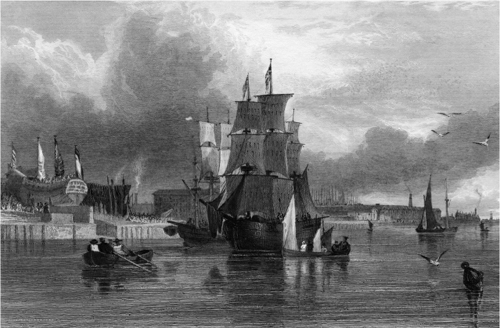
A view of Liverpool from the Mersey conveying a sense of the city's shipping, shipbuilding and associated industries in the eighteenth and nineteenth centuries. In the background are the King's Dock, the King's Tobacco Warehouse and the Herculaneum Pottery.
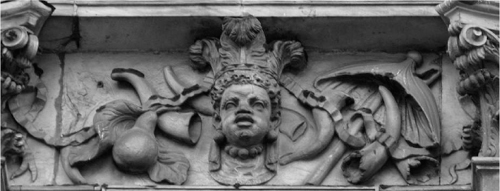
The links between Liverpool and Africa were literally set in stone in the 1750s in the elaborate friezes depicting African heads on the city's Exchange, now the Town Hall.
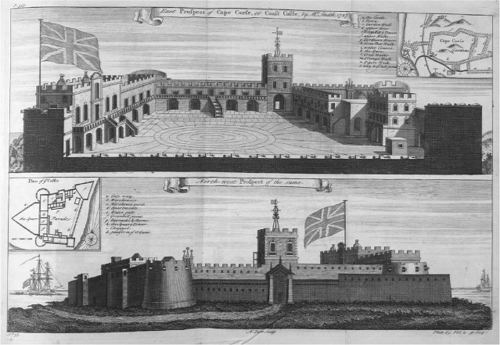
Cape Coast Castle, headquarters of the Royal African Company, and a formidable fortress that dominated the Gold Coast. Its vast underground vaults, constructed as prisons in the 1680s, could hold up to a thousand slaves awaiting shipment. It was here that the Zong was purchased in 1781.

African canoes transporting slaves from the coast to awaiting slave ships, off Elmina.

A Liverpool slaver, around 1780, at the height of the city's slaving activity. The four ventilation ports in the lower hull are a giveaway for the ship's main business, as are the small boats being rowed by Africans towards the vessel, and the predominantly wooden buildings on the coastline almost certainly intended to represent West Africa.
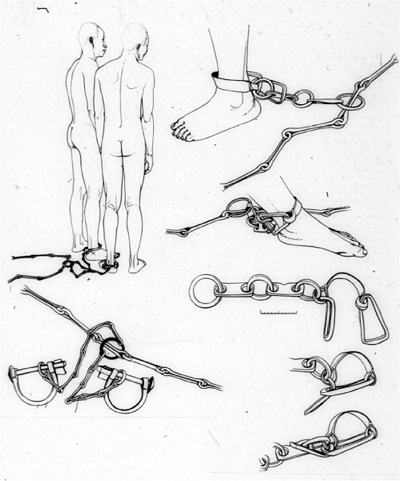
The ultimate security of the slave ships: Africans in fetters and manacles.
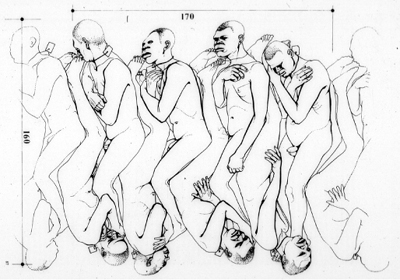
Crowding on board made the voyage a living hell for the Africans below deck, enraging some and driving others to despair.
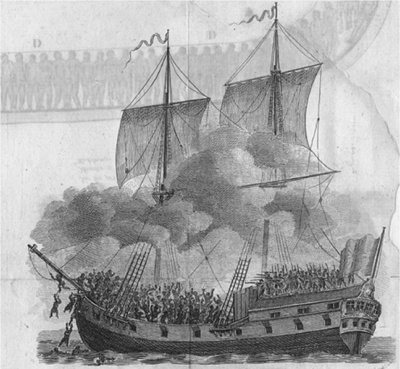
The fear of all slave traders: an African revolt on board a slave ship. The crew have retreated behind the barricado and fire upon the rebelling slaves.
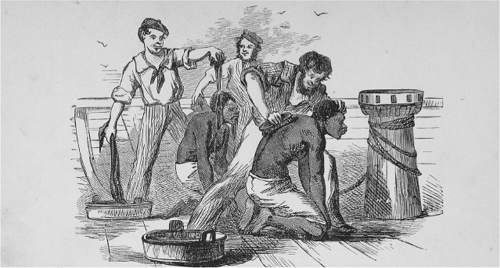
Sailors routinely cleaned Africans on arrival in the Americas so that they fetched the best selling price. They would be scrubbed, oiled and buffed; scars and other evidence of trauma and sickness would be disguised.
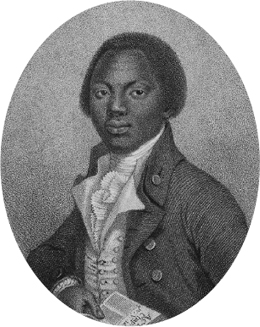
Olaudah Equiano, a key spokesman for Africans in the abolition campaign, in a frontispiece to his best-selling self-published autobiography of 1789.
Next page
